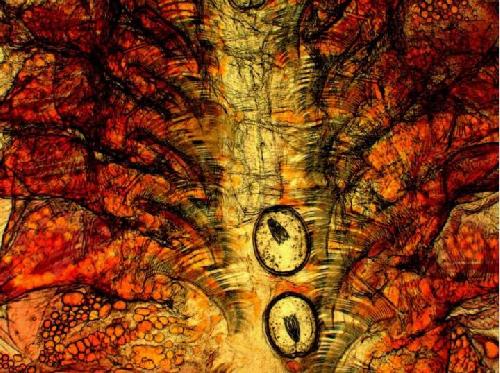Artemia (the scientific name of the small crustacean that is also commonly known as 'sea monkey') is famous for being able to live in extreme environments and has become a model organism used to test the toxicity of chemicals in water. In addition, Artemia can produce dormant eggs, known as cysts, that can be stored for long periods and hatched on demand to provide a convenient form of live feed for the seafood industry, and 2000 tonnes of Artemia cysts per year are sold worldwide.
Marta Sánchez and Andy Green, both from the Estación Biológica de Doñana in Seville, Spain, and colleagues are interested in environmental parasitology, i.e., the study of interactions between parasites and pollution or climate change. Artemia is an intermediate host for tapeworms that eventually infect water birds such as flamingos and grebes, and the researchers had previously shown that tapeworm infection can change the shrimps' physiology and behavior.
For this study, the researchers collected brine shrimp from a highly polluted estuary in Spain and determined their infection status with tapeworm larvae. During the first collection in April 2014, 98% of the shrimp were infected, about half of them with only one species of parasite. One month later, in May 2014, again 98% of Artemia were infected, most of them with more than one tapeworm species.
 Artemia infected by tapeworm larvae contain carotenoid-rich lipid droplets induced by the parasite. Credit: Sample provided by Marta Sánchez; photography by Javier Díaz Real
Artemia infected by tapeworm larvae contain carotenoid-rich lipid droplets induced by the parasite. Credit: Sample provided by Marta Sánchez; photography by Javier Díaz Real
Both samples were used for toxicity testing with arsenic, a pollutant that is commonly found in concentrations considered harmful in the estuaries where the shrimp came from. To their surprise, the researchers found that infected shrimp were consistently more resistant to arsenic than uninfected ones. This was true not only at 25 degrees Celsius (the temperature under which both samples were tested), but also at 29 degrees (tested on some of the shrimp from the larger May sample). Overall, the 4-degree increase--consistent with current climate-change predictions for the change in mean temperature--made the shrimp more vulnerable to arsenic toxicity.
To examine how parasite infection might protect the shrimp against arsenic toxicity, the researchers collected another sample from the same location in May 2015. Infection details were similar to the May 2014 sample. Comparing infected and uninfected Artemia, they found increased numbers of fat-containing droplets in the infected shrimp. Parasite infection was also associated with significant changes in oxidative stress markers.
Lipids such as those in lipid droplets are thought to be able to protect organisms against pollutants by sequestering toxins away from sensitive target sites--a principle known as 'survival of the fattest'. Regarding oxidative stress, the researchers speculate that the tapeworm parasites benefit from healthy intermediate hosts with high chances of becoming tasty food for flamingos, grebes and other final avian hosts.
Their study, the researchers say "provides the first empirical evidence that parasites can increase resistance to metal or metalloid pollution, rather than decrease it. It is also the first study to consider the influence of temperature change on parasite-pollutant interactions." They add that the results "contradict the pre-existing view that pollution and parasites are stressors that both have negative effects on the health of free living organisms", and suggest that additional studies in other host-parasite systems are warranted to evaluate the broader relevance of these findings.
source: PLOS